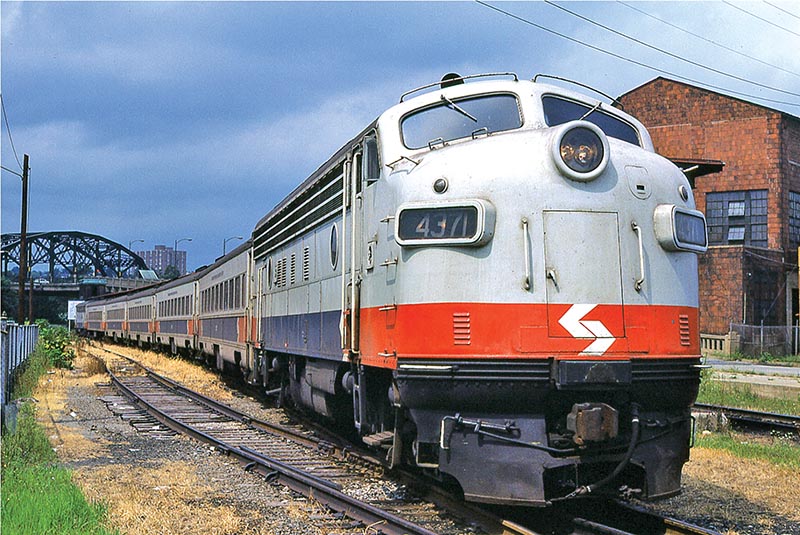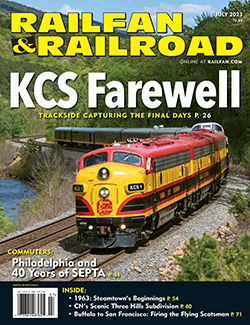 By Patrick J. Yough/photos as noted
By Patrick J. Yough/photos as noted
Philadelphia is served by a robust commuter rail system made up of 13 lines connecting 150 stations, creating the fifth busiest commuter operation in the U.S. While the former Pennsylvania and Reading lines, now operated by Southeastern Pennsylvania Transportation Authority (SEPTA), are celebrating their 40th year of direct operation, public support of regional passenger rail dates back almost 60 years. Over the decades, the system has experienced its own unique challenges.
On February 18, 1964, the Pennsylvania legislature authorized the formation of the SEPTA to manage public transportation in the five-county region surrounding Philadelphia. Prior to that, the city of Philadelphia created the Passenger Service Improvement Corporation (PSIC) to provide subsidies to PRR and Reading for operation of each road’s branches to Chestnut Hill. In 1960, PSIC expanded subsidies on all commuter rail lines within the city limits. On September 8, 1961, the Southeastern Pennsylvania Transportation Compact (SEPACT) was formed by the city of Philadelphia and Montgomery, Bucks, and Chester counties to address regional transportation issues. On November 1, 1965, PSIC and SEPACT were merged into SEPTA.
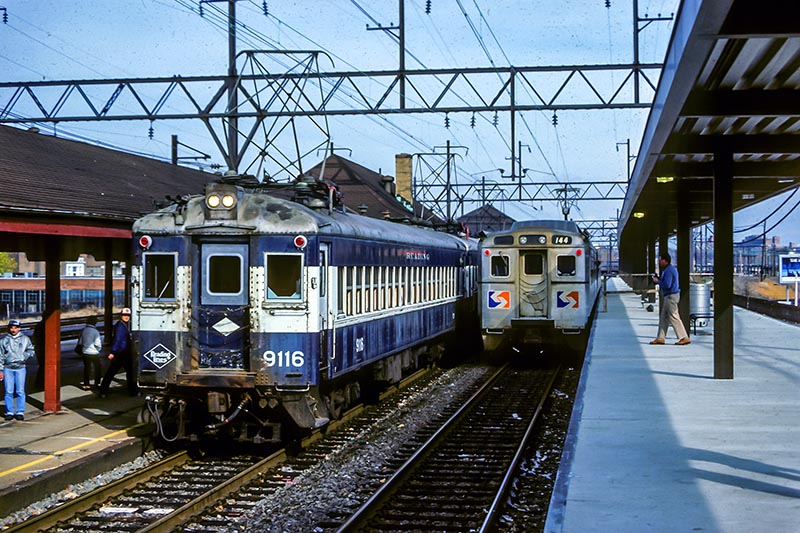
ABOVE: Vintage ex-Reading Blueliners and modern SEPTA Silverliner IVs meet at Wayne Junction on November 17, 1985. —Steve Barry
SEPTA operates a diverse mix of commuter rail, rapid transit, light rail, trolley, bus, and electric bus service. The SEPTA service territory includes Philadelphia and surrounding counties, as well as Trenton and Ewing in Mercer County, N.J. SEPTA also provides commuter rail service to Claymont, Wilmington, and Newark, Del., under contract with the Delaware Department of Transportation. SEPTA provides connections with New Jersey Transit at Trenton, allowing for an economical alternative to Amtrak between New York and Philadelphia. While this article focuses on the Railroad Division, some of SEPTA’s systemic problems are complicated by the fact that it provides several forms of transportation competing for the same passengers and capital funding, often within one or two blocks of each other in certain neighborhoods.
The 20th Century
Pennsylvania Railroad began electrification of the Philadelphia area commuter zone in late 1913 utilizing 11,0000-volt (11 kV), 25 Hz, single-phase a.c. power. The first route selected was between Paoli and Broad Street Station, a distance of 20 miles, with service starting on September 11, 1915. A new shop was built at Paoli to maintain the classic owl-eyed MP54 electric multiple-unit cars. Electrification was quickly extended to the Chestnut Hill branch (1918), West Chester via Media (1928), and Wilmington (1928). The Schuylkill Branch was electrified as far as Norristown in 1930.
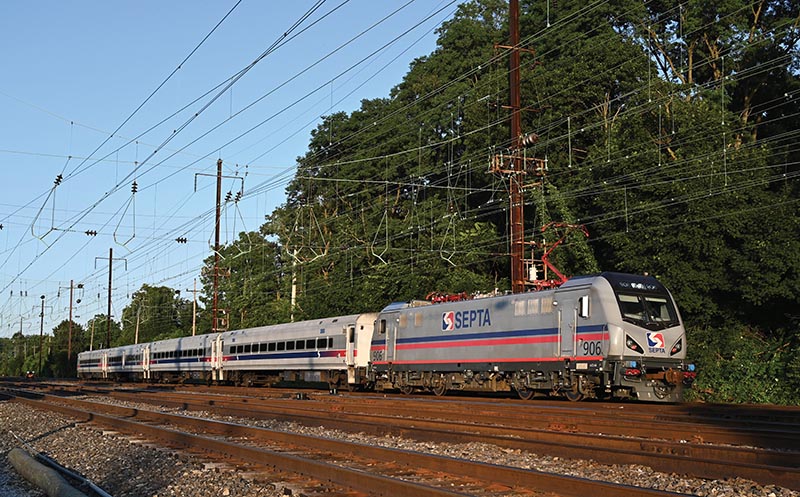
ABOVE: Train 3453 (West Trenton–Airport) passes the newly installed third track at Stony Hill Road in Yardley, Pa., on April 18, 2015. The train is on what would become the CSX separated line starting at West Trenton and extending to Wood Interlocking near Woodbourne. —Patrick J. Yough
On December 14, 1927, Reading announced a plan to electrify suburban service from Reading Terminal to Lansdale, Doylestown, Hatboro, and West Trenton. Reading contracted with Harlan & Hollingsworth to build the electric m.u. cars for the new suburban service opening on July 26, 1931. Additional routes were added in the decades that followed.
The classic heavyweights soldiered on through the postwar era, as the railroads had little incentive to invest in new equipment on a money-losing operation. The first new cars financed by PSIC were the Silverliner IIs in 1963, built by Budd Company in nearby Red Lion, Pa., for both PRR and Reading.
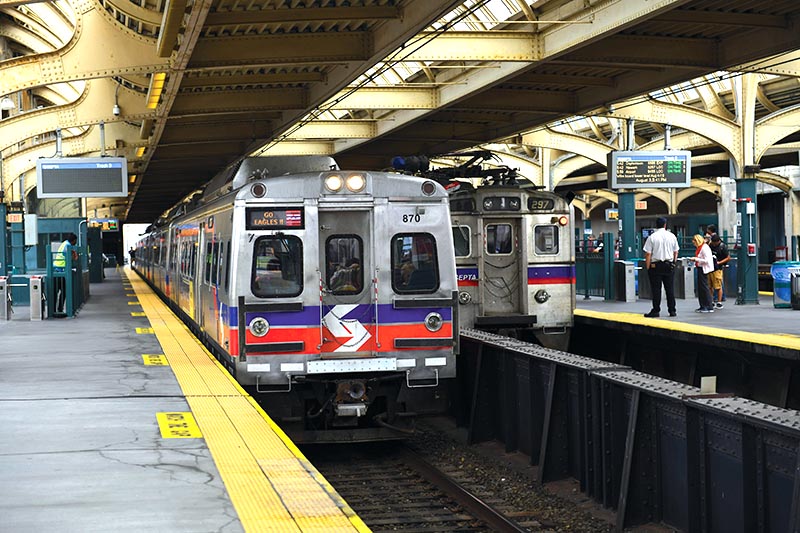
ABOVE: A set of Silverliner Vs prepares to depart the upper level of Philadelphia’s 30th Street Station for Trenton on August 3, 2018. —Patrick J. Yough
On February 1, 1968, Pennsylvania Railroad and New York Central merged to form the colossal Penn Central. A year later the former New Haven Railroad was forced into the mix. This gave PC control of the entire Northeast Corridor between Boston and Washington, D.C., along with responsibility for commuter operations in every major metropolitan area in the Northeast. Penn Central was doomed to fail from the beginning and on June 21, 1970, declared bankruptcy. Reading Company struggled on a little longer and filed for bankruptcy on November 23, 1971.
With the Northeastern rail network about to collapse, the government stepped in with passage of the Railroad Revitalization and Regulatory Reform Act of 1976, paving the way for formation of Consolidated Rail Corporation (Conrail). Along with Penn Central and Reading, other roads joined in. As part of the deal, the Northeast Corridor, including the line from Philadelphia to Harrisburg, was sold to Amtrak…


